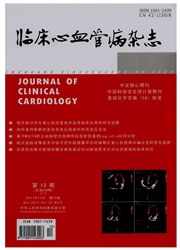

 中文摘要:
中文摘要:
目的:探索人脐静脉血内皮祖细胞的分离和扩增条件,并观测其生物学特性。方法:采集人脐静脉血,应用密度梯度离心法,分离其中单个核细胞,流式细胞术检测CD133^+CD34^+阳性率;利用差速贴壁法(48h内贴壁和48h后贴壁)联合内皮细胞专用培养基EGM-2培养细胞,接种于预先包埋了明胶培养瓶或培养板,倒置显微镜观察细胞生长形态和形成集落能力,免疫细胞化学法检测其免疫表型,摄取Ac-LDL和连接UEA-1功能,在生长因子培养体系中诱导其向成熟内皮细胞分化。结果:所获单个核细胞中CD133^+CD34^+百分比为1.06%;在EGM-2培养体系下可获得2种亚型的内皮祖细胞,即早期内皮祖细胞和晚期增殖性内皮祖细胞。其中48h后贴壁细胞属于早期内皮祖细胞,增殖能力较弱,免疫荧光检测,显示CD14和CD34KDR胞浆呈阳性表达,Ac-LDL^+UEA-1^+功能特征;而48h内贴壁细胞在10~17d时可见由单个细胞增殖形成的克隆,呈铺路石样单层排列,增殖力旺盛形成融合状态,形成次集集落;经免疫荧光检测,显示CD133CD34和CD34KDR细胞质呈阳性表达,Ac—LDL^+UEA-1^+功能特征,传代后vWF,CD31呈强阳性表达,是晚期增殖性内皮祖细胞。结论:经人脐静脉血可分离培养获得2种亚型的内皮祖细胞,在特定的培养体系中细胞可由祖细胞表型向成熟内皮细胞分化。
 英文摘要:
英文摘要:
Objective.. To isolate and culture endothelial progenitor cells (EPCs) from human umbilical cord blood (HUCB) and study their biological characterizations in vitro. Method.. Mononuclear cells (MNCs) were isolated from HUCB by density gradient centrifugation, and detected for the percentage of CD133/CD34 with flow cytometry. MNCs were seeded in gelatin-coated culture dishes, cultured in the medium containing growth factors combining different speed adherence. Cell morphology and the capability of forming colony units were investigated by phase-contrast microscopy. The differentiation of the EPCs was determined by immunocytochemistry. Result: The percentage of CD34^+CD133^+ in MNCs isolated from HUCB was 1.06%. We obtained two types of EPCs using endothelial cell growth medium (EGM), referred to as early EPCs and late outgrow EPCs. The adherent cells after 48 hours were early EPCs and showed to be spindle-shaped with a tendency to form colonies which weakly potential, and were positive for CD14 at 7 days, those cells can express CD34KDR. In addition, cells took up Ac-LDL and bound lectin UEA-1. The adherent cells during 48 hours demonstrated colony forming cells with typical cobblestone morphology during the first 9- 17 days showed robust proliferative potential and give rise to secondary colonies. During the 8 and 15 days, cells continued to be positively expressed CD34CD133 and CD34KDR. In addition, cells took up Ac-LDL and bound lectin UEA-1. Those cells became positive for vWF and CD31 after 40 days of culture, those cells are late outgrowth EPCs. Conclusion:These data showed that two types EPCs can be isolated and cultured from umbilical cord blood. During the culture conditions containing growth factors, EPCs gradually lost progenitor characterization and differentiated towards mature endothelial cells.
 同期刊论文项目
同期刊论文项目
 同项目期刊论文
同项目期刊论文
 期刊信息
期刊信息
